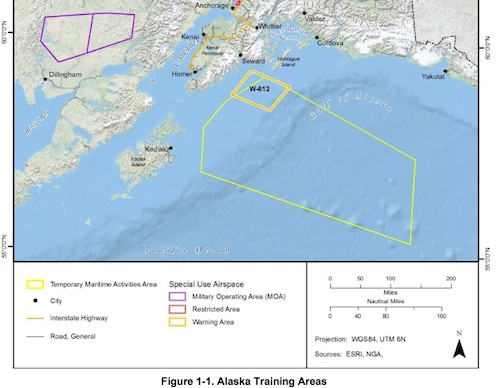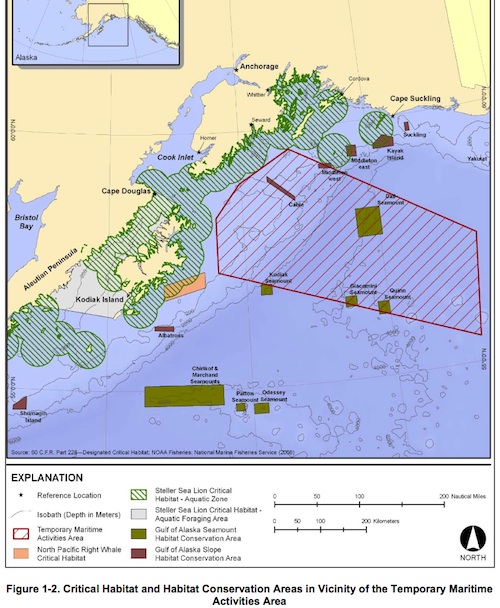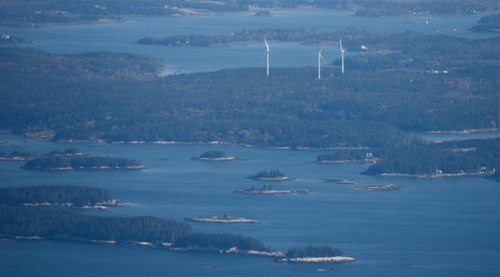Navy plans to add sonar training in Gulf of Alaska spurs local concerns, as NMFS prepares to issue permits
Effects of Noise on Wildlife, News, Sonar Comments Off on Navy plans to add sonar training in Gulf of Alaska spurs local concerns, as NMFS prepares to issue permitsThe final EIS in the Navy’s multi-year effort to get its training activities into legal compliance with NEPA requirements is heading for the finish line. Adding to the drama, however, is the fact that the Navy is pushing to introduce active sonar training into the Gulf of Alaska—while previous EISs at other training ranges proposed continuing sonar training at or near levels that have been taking place for years, the Alaskan proposal would bring sonar training for the first time into Alaskan waters rich with marine mammal habitat. While the Alaskan range where sonar training would take place is relatively small compared to many of the other ranges on the east and west coasts of the continental US, it is within dozens of miles of key whale habitat, and locals have expressed much concern at public hearings. For more detail, see these links to Alaskan newspaper coverage.


Meanwhile, as the Navy completes the EIS, it has also applied for the Incidental Harassment Authorization from the National Marine Fisheries Service, which announced in early February its intention to issue a Letter of Authorization to permit Navy activities as planned from December 2010 to December 2015. The Navy estimates that its covered activities will take individuals of 20 species of marine mammals (15 cetaceans and 5 pinnipeds) through Level B behavioral harassment. “Further, the Navy requests authorization to take 3 individual beaked whales (of any of the following species: Baird’s beaked whale, Cuvier’s beaked whale, Stejneger’s beaked whale) annually by serious injury or mortality.” See the Navy’s IHA application here, and NMFS notice of intent to issue the LOA here.




